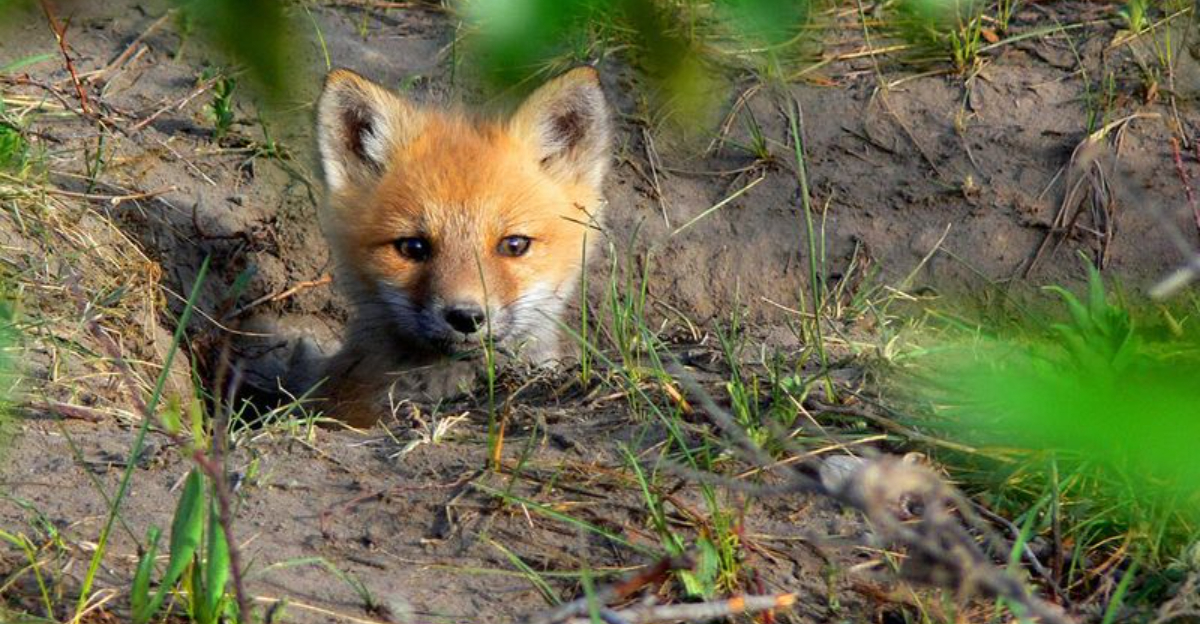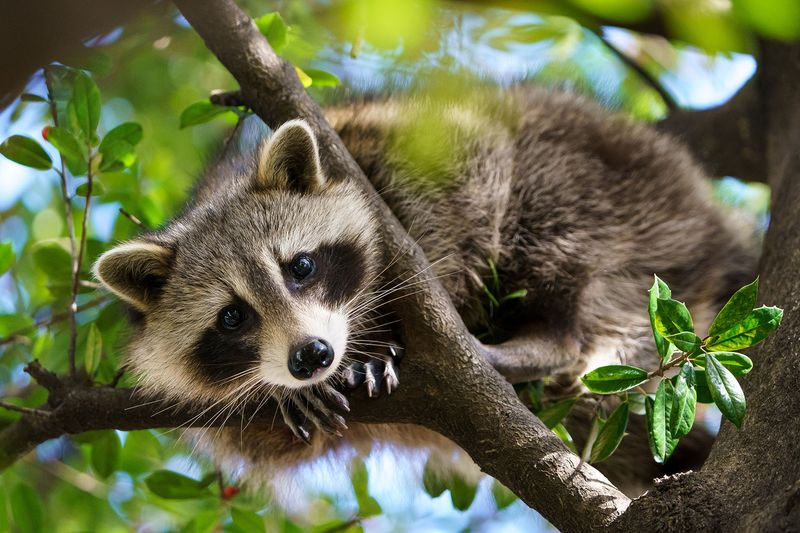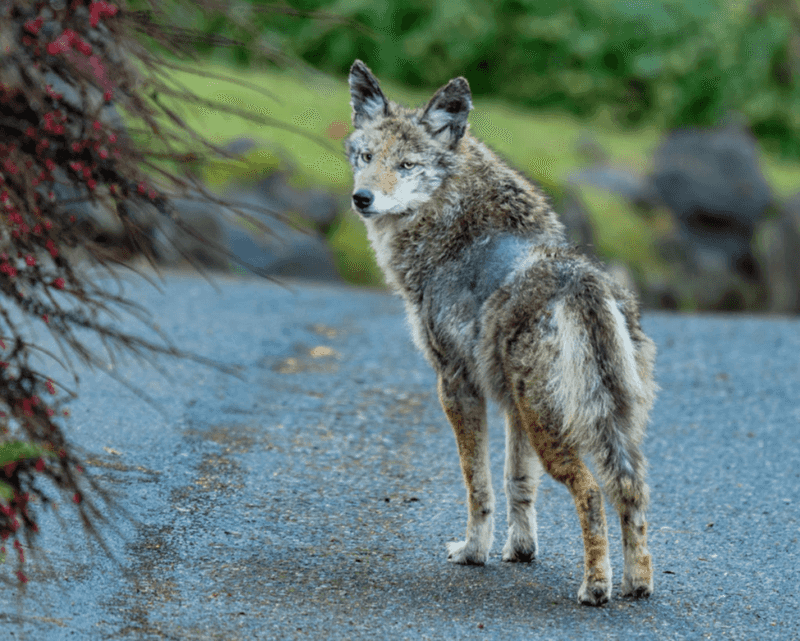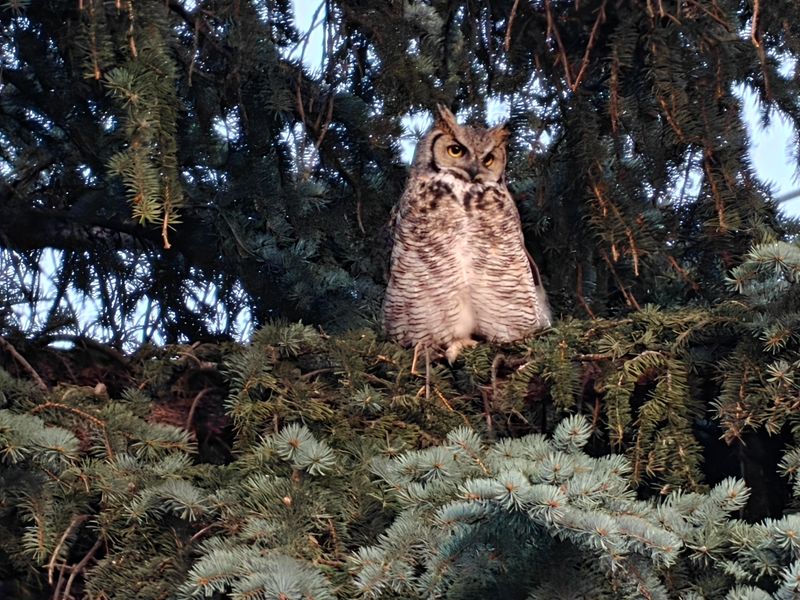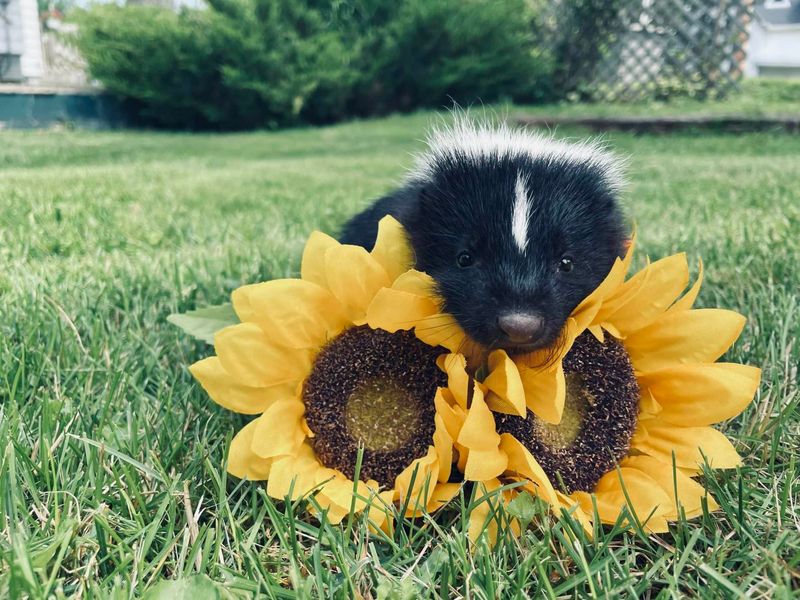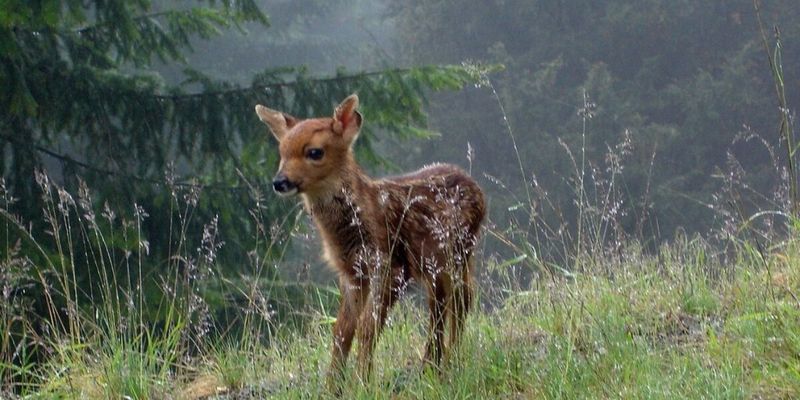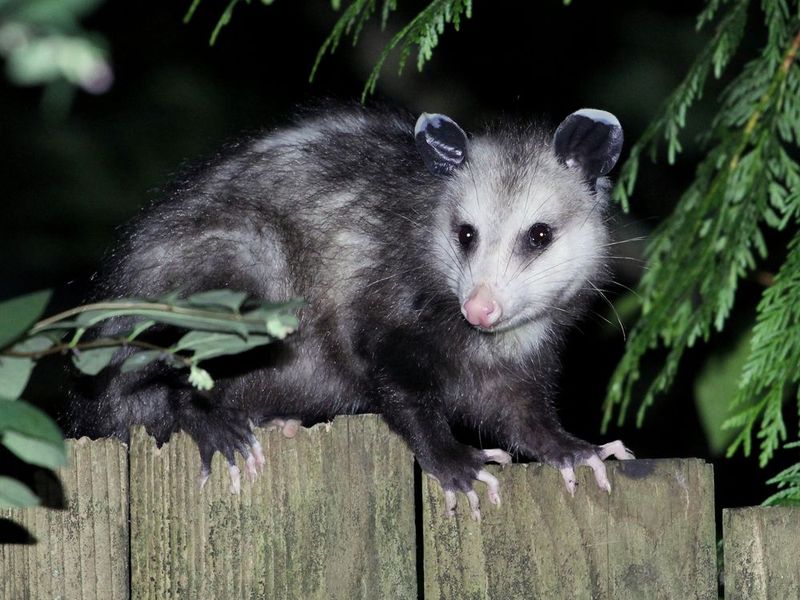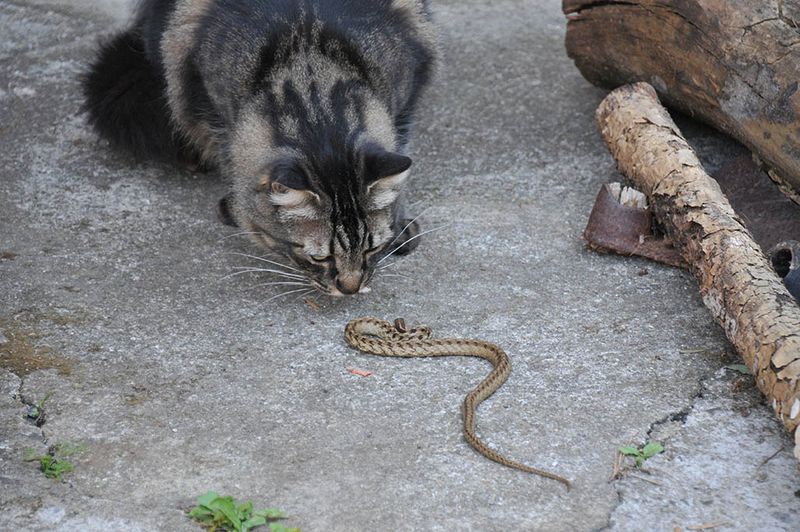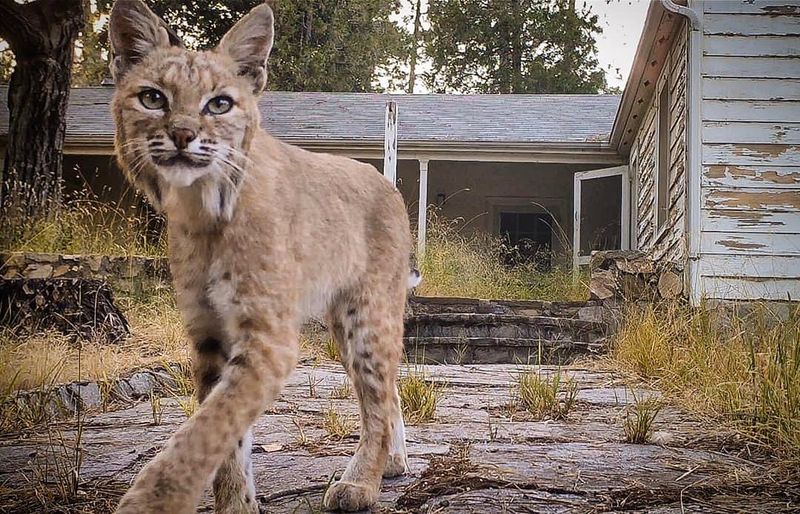📖 Table of Content:
Forested areas are full of life, offering endless stimulation for curious cats who roam nearby. The movement, sounds, and scents of wildlife naturally draw feline attention. While some encounters are brief and harmless, others can pose real risks.
Wild animals don’t always pose a threat, but territorial behavior, disease transmission, or predatory instincts can quickly turn a simple interaction into a problem. Even small creatures like rodents or birds can trigger defensive responses in cats or carry parasites. Larger animals may view a cat as prey or competition, leading to dangerous confrontations.
Knowing which forest species are common in the area makes it easier to anticipate possible encounters. With the right precautions, outdoor time can remain enriching and low-risk for cats. Respecting the balance between domestic pets and native wildlife is key to creating a safe outdoor environment.
1. Raccoons
Nocturnal and clever, raccoons frequently visit residential areas bordering forests in search of food. These masked bandits are approximately the same size as adult cats but generally more aggressive when confronted.
Your cat might initially be curious about raccoons, but direct interaction could lead to fights or injuries. Raccoons can carry diseases like rabies and roundworm that pose serious health risks to pets.
Keep your cat indoors from dusk until dawn when raccoons are most active. Secure garbage cans and don’t leave pet food outside overnight to minimize attracting these wild neighbors to your property.
2. Coyotes
Coyotes represent one of the most significant threats to outdoor cats near forested areas. These wild canines view small pets as potential prey and won’t hesitate to attack if given the opportunity.
They’re adaptable predators that thrive in the boundary between forests and suburban developments. Coyotes are most active during dawn and dusk but may hunt at any time when hungry.
Protecting your cat means supervising outdoor time, especially during early morning and evening hours. Consider creating a coyote-proof outdoor enclosure if you want your cat to enjoy fresh air safely.
3. Owls
Large owl species like Great Horned Owls can pose surprising threats to cats, especially kittens or smaller breeds. These silent hunters swoop down from their forest perches with incredible precision.
Cats roaming at night may become targets for hungry owls searching for prey. The danger is most pronounced for cats weighing under 10 pounds, as larger cats usually exceed what most owls can lift.
Forest-dwelling owls typically hunt at night, so keeping your cat indoors after sunset provides the best protection. Be especially vigilant during winter months when food scarcity makes owls more desperate and willing to target unusual prey.
4. Foxes
It’s not uncommon to spot red or gray foxes near forest borders close to homes. Because they’re evenly matched in size, foxes usually steer clear of direct conflict with cats. Encounters are generally marked by brief curiosity and quick separation.
Foxes may compete with cats for the same small prey like mice and birds. This dietary overlap sometimes creates territorial tension between the species.
Young kittens might be vulnerable to fox predation, so supervise very small cats. Foxes can transmit parasites and diseases, including rabies, so even non-aggressive interactions could pose health risks to your curious feline.
5. Skunks
Forest-dwelling skunks frequently venture into yards adjacent to wooded areas. Their distinctive black and white coloration serves as a warning that most cats quickly learn to respect.
Curious cats often approach skunks once before receiving an unforgettable lesson about personal space. The skunk’s powerful spray can cause temporary blindness, nausea, and a smell that lingers for weeks despite repeated baths.
Skunks are generally non-aggressive unless cornered or startled. They’re most active at dawn, dusk, and night. If your cat returns home smelling terrible, a specialized pet shampoo with hydrogen peroxide, baking soda, and dish soap can help neutralize the odor.
6. Deer
Residential zones near forests frequently attract deer looking for vegetation to nibble on. These animals aren’t aggressive toward cats, but can still cause injury if they feel trapped or provoked.
Most cats and deer maintain a respectful distance from each other. Your feline might watch deer with fascination from a safe vantage point without direct confrontation. Mother deer with fawns are particularly protective and more likely to react defensively if a cat approaches too closely.
Deer may also attract ticks carrying Lyme disease to your property, indirectly creating health risks for outdoor cats. Regular tick prevention is essential for cats with access to areas frequented by deer.
7. Opossums
North America’s only marsupial regularly visits properties adjacent to forests. These nocturnal creatures typically avoid confrontation with cats through their slow movements and non-aggressive nature.
Opossums and cats often establish a peaceful coexistence, sometimes even feeding near each other without incident. The opossum’s famous defensive strategy of “playing dead” makes them unlikely to engage in fights with curious felines.
Despite their docile nature, opossums can carry fleas, ticks, and occasionally diseases transmissible to cats. They’re excellent tick consumers, however, potentially reducing the overall tick population around your home—an indirect benefit for your outdoor cat.
8. Snakes
Forested areas harbor various snake species that might venture into adjacent yards. Most non-venomous snakes pose little threat to cats, though curious felines might receive defensive bites if they paw or pounce at these reptiles.
Venomous species like copperheads or rattlesnakes present serious dangers in regions where they’re native. Cats typically avoid adult venomous snakes but might investigate juvenile snakes that haven’t developed full warning patterns or behaviors.
Cats sometimes hunt and kill smaller snakes, potentially leading to retaliatory strikes. Keeping your yard clear of debris piles and tall grass reduces snake habitat near your home, decreasing the chance of unwanted reptilian-feline encounters.
9. Bobcats
Forests near residential zones can occasionally be home to bobcats, distant cousins of household felines. Though larger and more solitary, they generally keep to themselves and avoid people. Still, they might explore quiet backyards on the edges of their territory during early morning or evening hours.
Encounters between bobcats and house cats typically involve mutual avoidance rather than aggression. The wild cats primarily hunt rabbits and rodents, not other felines. However, very small cats or kittens might be perceived as prey in rare circumstances.
Bobcats can transmit feline diseases to domestic cats through direct contact or shared territories. Their presence indicates healthy forest ecosystems but warrants keeping smaller pets supervised during outdoor time in areas where these beautiful wild cats roam.
10. Bears
In regions where forests meet residential areas, black bears can become an unexpected threat to outdoor cats. These large omnivores rarely see felines as prey, but their sheer power makes any close encounter hazardous. Even a defensive swipe could prove fatal to a curious cat.
Most cats instinctively avoid bears, seeking immediate shelter when detecting their presence. Bears primarily visit residential areas when attracted by food sources like garbage, bird feeders, or pet food left outdoors.
Never allow cats outside unsupervised in areas with known bear activity. Eliminate attractants around your property by securing trash, removing bird feeders during active bear seasons, and feeding pets indoors. Bear encounters, while relatively rare, require the most serious precautions among all wildlife interactions.
